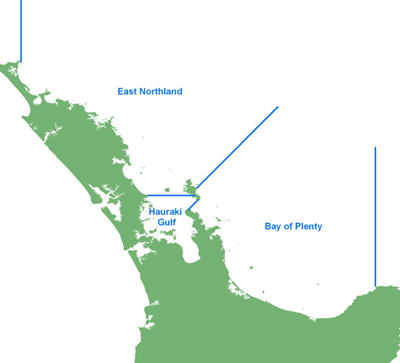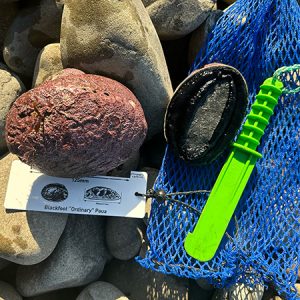November 2016
During October 2016 LegaSea ran an online survey to gauge recreational fishers’ reaction to the proposed Snapper 1 Management Plan, released for public comment on 2 September. The 12-question survey attracted 2596 responses in a week. LegaSea thanks all respondents for their prompt feedback.
SNA1 Management Plan
In 2013 there was unprecedented media coverage of management issues and subsequent Ministerial decisions made regarding Snapper 1, the most popular fishery off the northeast coast of the North Island.
LegaSea initiated a Save Our Snapper campaign. The public’s response highlighted problems with our fisheries management system and the need for more inclusive decision-making.
After making his allocation decisions Nathan Guy, the Minister for Primary Industries, appointed the SNA1 Strategy Group in 2014. This was a group of recreational, customary and commercial fishing representatives and Ministry personnel.
The Group included our New Zealand Sport Fishing Council fisheries experts. Their task was to develop a plan to guide future management while rebuilding the fishery to an abundant level.
The Strategy Group met for two years before settling on a Plan for the Minister to consider. The Minister sought public feedback before approving the Plan.
Respondents to the LegaSea survey provided the most well considered answers and comprehensive comments.
Many of the management strategies that people suggested were discussed at length during the Strategy Group meetings, along with advice from fisheries scientists.
The SNA1 Strategy Group reviewed the preliminary results of the LegaSea survey and appreciates the feedback. The Group accepts there are further issues that can be dealt with in future, by either the proposed SNA1 Advisory Group or the Minister.
What follows is a LegaSea summary of the 2596 responses including written comments received between the 21st to 28th October 2016, to the survey “Snapper fishing – your opinion matters”.

Fish abundance is usually measured as a percentage of the unfished stock size. The Snapper 1 stock is estimated to be around 24 percent of its unfished, original level.
The management targets set out in the Plan are to rebuild the Snapper 1 stock to 40 percent of the unfished level (B40) within 25 years, with an interim target of B30 to be achieved by 2025. There was strong support for the B40 target although many people expressed support for a faster rebuild or a higher target than what is currently in the Plan.

The Bay of Plenty sub-stock was estimated to be below 10 percent of its original stock level in 2013. There was strong support for the plan to include specific, targeted measures to rebuild the Bay of Plenty snapper biomass.
There was strong opposition to any suggestion that we would need to wait until the new stock assessment is available in 2022 before any changes are made to the current allocations. The plan acknowledges there will not be any allocation review in 2016/17. It also notes the final results of the tagging programme and next stock assessment may not be ready until 2021. That is usually the time when the fishery is reviewed and changes to the commercial allocation, the TACC, and allowances are made.

While many people wanted equal size limits for commercial and recreational, there was also concern about waste and discarding undersized fish. Some suggested commercial fishers should land all catch, regardless of size, while some felt that recreational fishers should keep the first 7 snapper they catch over the size limit then stop fishing. A wide range of recreational size limits were suggested.
There was support for the recreational size returning to 27 cm but not as much as expected, while others suggested that size limits increase to 32 cm or higher and some included a maximum size around 60 cm. Using modified hooks was seen as one way of reducing the catch or release mortality of small snapper.

A wide range of comments were received regarding the use of industrial fishing methods such as trawling inshore, within the 100 metre depth contour. A lot of people felt that trawling was damaging the stocks and environment.
There was support for pushing some or all commercial fishing offshore, or out of particular areas important for recreational fishers. Where there was conflict or overfishing many felt that non-commercial fishers should have priority. However, there was also support for small scale local commercial fishers (artisanal) rather than the bulk harvest, industrial methods.

There was strong support for a ‘move-on’ practice for commercial fishers, as part of a package of measures to reduce the capture and mortality of small snapper. There was less support for a ‘move-on’ practice for recreational fishers, mainly on the basis that is difficult for small boat or landbased fishers to move. Respondents also highlighted that the ‘move-on’ rule would be hard to enforce and monitor.
Local management
There was strong support for Snapper 1 to be managed as separate areas so more localised management strategies could be applied to each region.
For those who supported a split, three sub-areas received the most support, with some people promoting the need to make the Bay of Plenty a special area where trawling is prohibited and measures put in place to rebuild snapper and crayfish numbers.
Charter boat reporting
Amateur charter vessels currently report the capture of particular species. The Plan recommends this reporting requirement includes snapper catch.
Almost 75% of respondents supported or strongly supported the recommendation that amateur charter vessels report the numbers of released and retained snapper. However, safety was a major concern if skippers were engaged in counting fish rather than overseeing the vessel’s operation.
Another concern was the lack of monitoring of the total amount of fish being harvested by anglers on board charter vessels.
Additional comments
Respondents were also offered the opportunity to provide additional comments on the SNA1 Plan and management. We were pleased that almost 900 people chose to share their views on a range of matters.
There was strong support for eliminating trawling from inshore waters within the 100 metre depth contour. There were a variety of trawl exclusion zones suggested, ranging from 2km to 10km offshore.
Eliminating wastage, dumping, compliance and monitoring were common themes.
There was a surprising level of support for snapper fishing closures during spawning season, some preferring the closure to apply to both commercial and recreational fishing. There was no discussion on whether fishing for other species would be permitted during the snapper closure.
There was also some support for a slot rule, where a maximum and minimum size limit applies. Any such measure would need to be accompanied by a dedicated public education programme to mitigate the effects of wastage. There are still concerns about the ongoing mortality associated with the increase in minimum size limit from 27cm to 30cm, applying to recreational snapper harvest from 1 April 2014.
Want to join the team? Become a LegaSea Legend.
What’s sizzling this week in fish? – Read the Fryday FryUp.







